Atlantic Puffin
The Atlantic puffin or the “clown of the sea,” is a recognisable seabird in the North Atlantic. Famous for its beak and diving, it is essential in Arctic and sub-Arctic marine ecosystems.
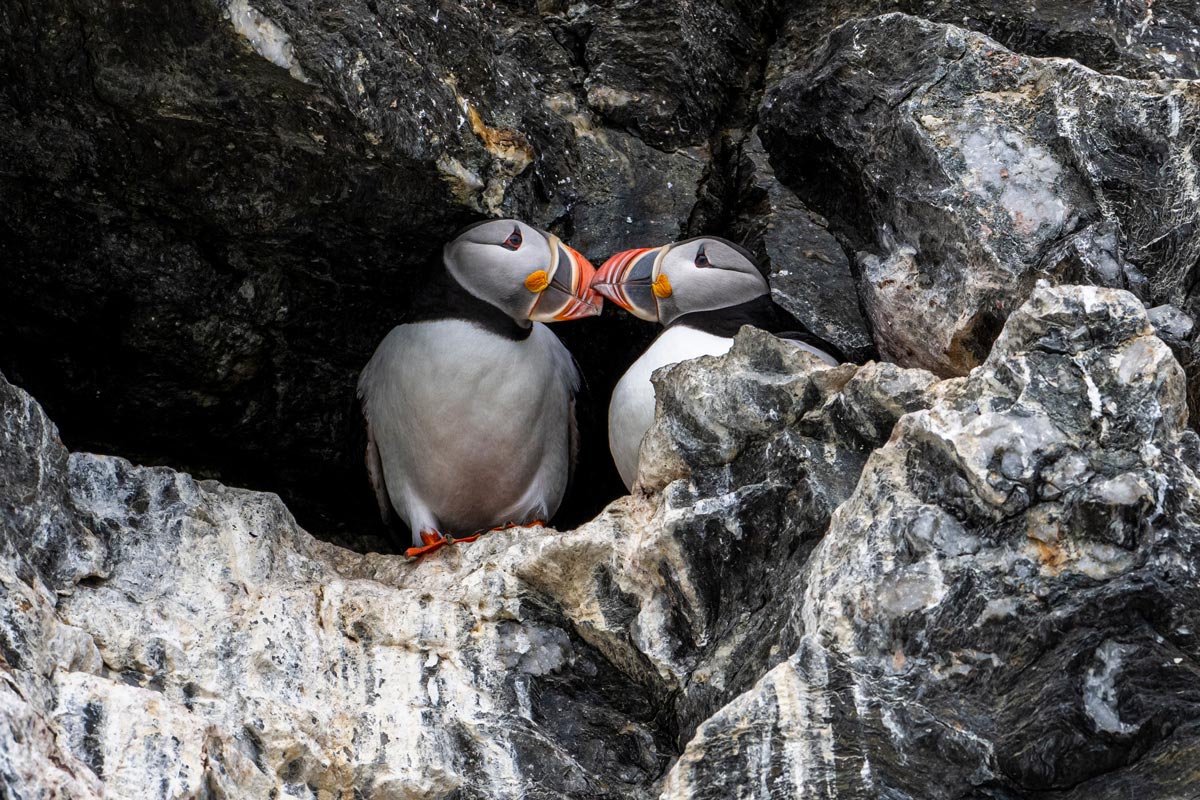
These birds usually have the same partner for life
Atlantic Puffin Quick Overview
| Scientific Name | Fratercula arctica |
| Population | Estimated at 11-12 million globally |
| Regions | North Atlantic |
| Destinations | Jan Mayen, Iceland, Canada, Svalbard, Greenland, France, Norway, England, Scotland |
| Average Length | ~30-32 cm (11.8-12.5 in) |
| Average Weight | ~450-500 g (1-1.1 lbs) |
| Diet Habits | Primarily kleptoparasitic – steals food from other birds; also hunts small birds, fish, and insects |
Questions Guests Ask About the Atlantic Puffin
Is a Puffin a Penguin?
Even though those two birds look very similar, puffins are not penguins. They are birds from different species with some differences. For example, penguins are flightless birds, whereas Atlantic puffins are strong fliers, averaging speeds of 80 km/h (50 mph). Moreover, they are very far apart geographically, with penguins found in Antarctica and Atlantic puffins in the Arctic.
What Does the Atlantic Puffin Eat?
Their diet consists of small, elongated fish such as sand lance, capelin, small herring, and Atlantic cod, which can be held in large quantities in their beak. During the extreme winter weather, and thanks to their ability to dive nearly 70 metres under the sea, these birds also consume small crustaceans, ragworms, and squid.
What Does an Atlantic Puffin Look Like?
They didn’t earn the nicknames of ‘clown of the sea” and “sea parrot” for no reason. These distinctive birds have orange legs and feet, alongside a highly compressed beak with colourful shades of red, orange, yellow, black, and white during the mating and breeding seasons. Outside the breeding period, it appears greyish and smaller, as some of the beak’s appendages are shed along with the feathers during the autumn moult.
How Big Is an Atlantic Puffin?
Having roughly the same size as other wildlife spotted in our Arctic expeditions, such as the black guillemot, the clown of the sea measures 28–34 cm (11–13 in) long, with a wingspan of 50–60 cm (20–24 in). They typically weigh 400–500 grams (0.9–1.1 lbs), and a baby puffin, also known as ‘puffling’, measures around 7 cm (2.7 inches) in length and weighs approximately 40 grams (1.4 oz).
Where Do They Live?
The Atlantic puffin’s habitat is in the North Atlantic, nesting on coastal cliffs and isolated islands. These precious animals can be found in several locations, including Jan Mayen, Iceland, Canada, Svalbard, Greenland, France, Norway, England, and Scotland. These regions offer rocky shorelines and suitable terrain for burrowing, which is essential for their breeding. And guess what? All these destinations are part of one of our many different expeditions.
When Is Puffin Season in Iceland?
One of the highlights of our expeditions to Iceland is spotting these birds. Over half of the world’s population, roughly 8 million, inhabits the country. The best time to observe them is during summer, from May to August, when they return to the coastal cliffs to breed. After August, they migrate to the open ocean.
Is the Atlantic Puffin Endangered?
Although the population of the clown of the sea is estimated to be around 12 million individuals worldwide, according to the IUCN statistics from the past decade, their conservation status has shifted from ‘Least Concern’ to ‘Vulnerable’. Populations have declined due to climate change, overfishing, and habitat destruction.
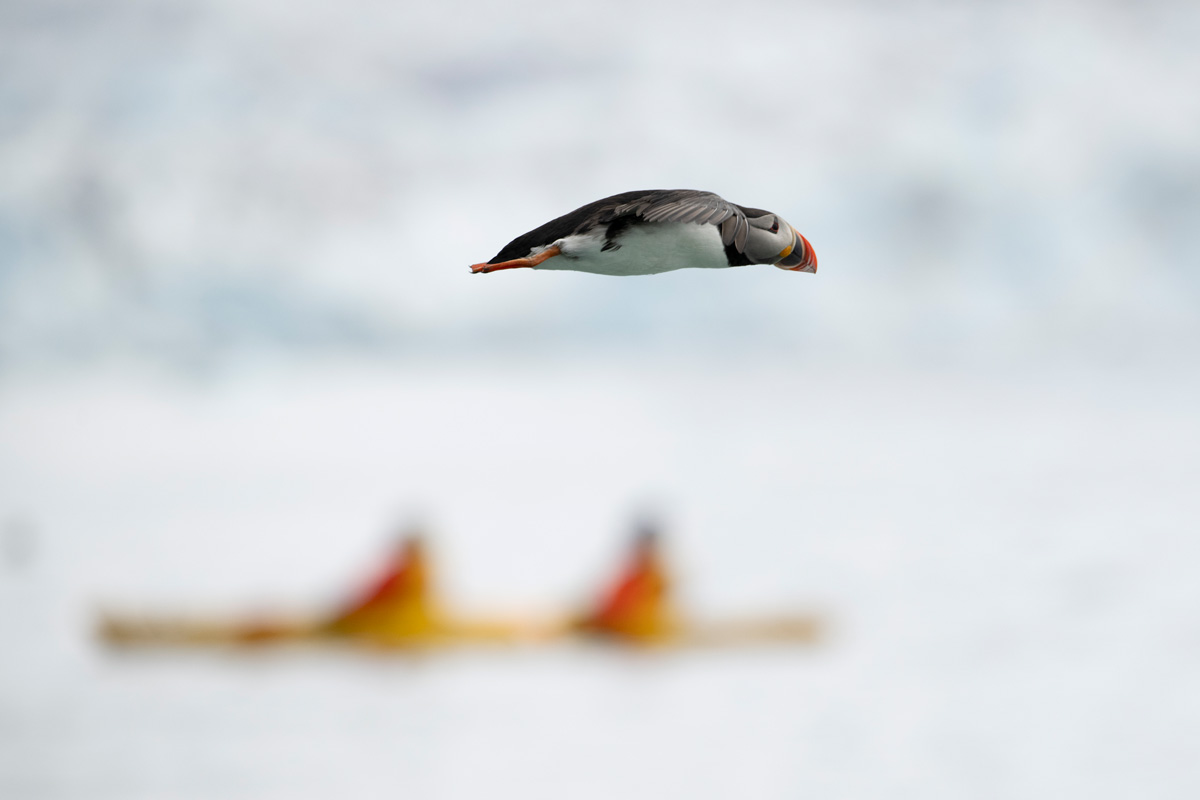
Imagine seeing these birds flying as you kayak?
How Many of These 10 Atlantic Puffin Facts Did You Already Know?
- They usually gather in groups both on breeding grounds and at sea.
- Atlantic puffins’ beaks change color seasonally: bright orange in summer and fading to grey in winter as outer layers shed.
- Their main predators are humans and other birds, such as the great black-backed gulls.
- They can both swim and fly.
- Puffins typically form lifelong bonds with their partners.
- Atlantic puffins’ lifespan is approximately 25 years.
- These birds can dive up to 60 meters (200 feet).
- Pufflings are covered in grey down and remains in its burrow for several weeks before taking its first flight.
- Both male and female incubate their eggs.
- There are four puffin species in the wild: the Tufted Puffin, the Horned Puffin, the Atlantic Puffin, and the Rhinoceros Auklet.
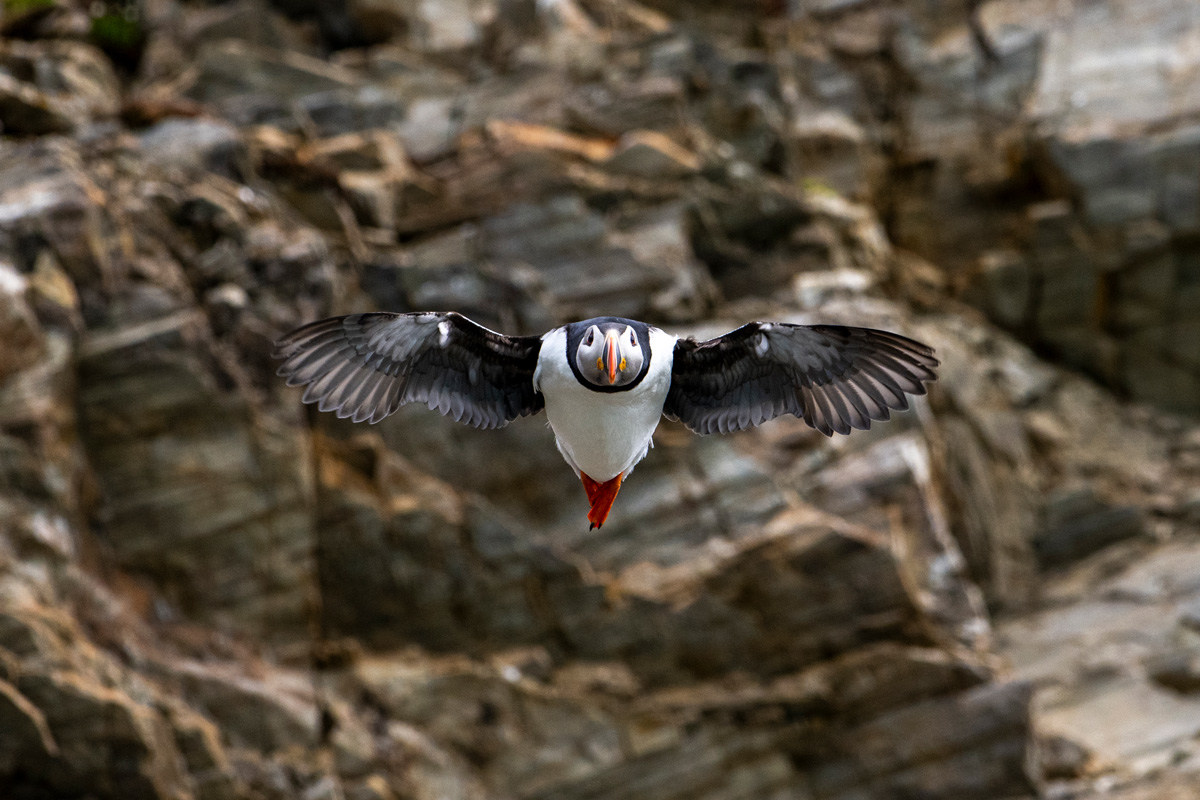

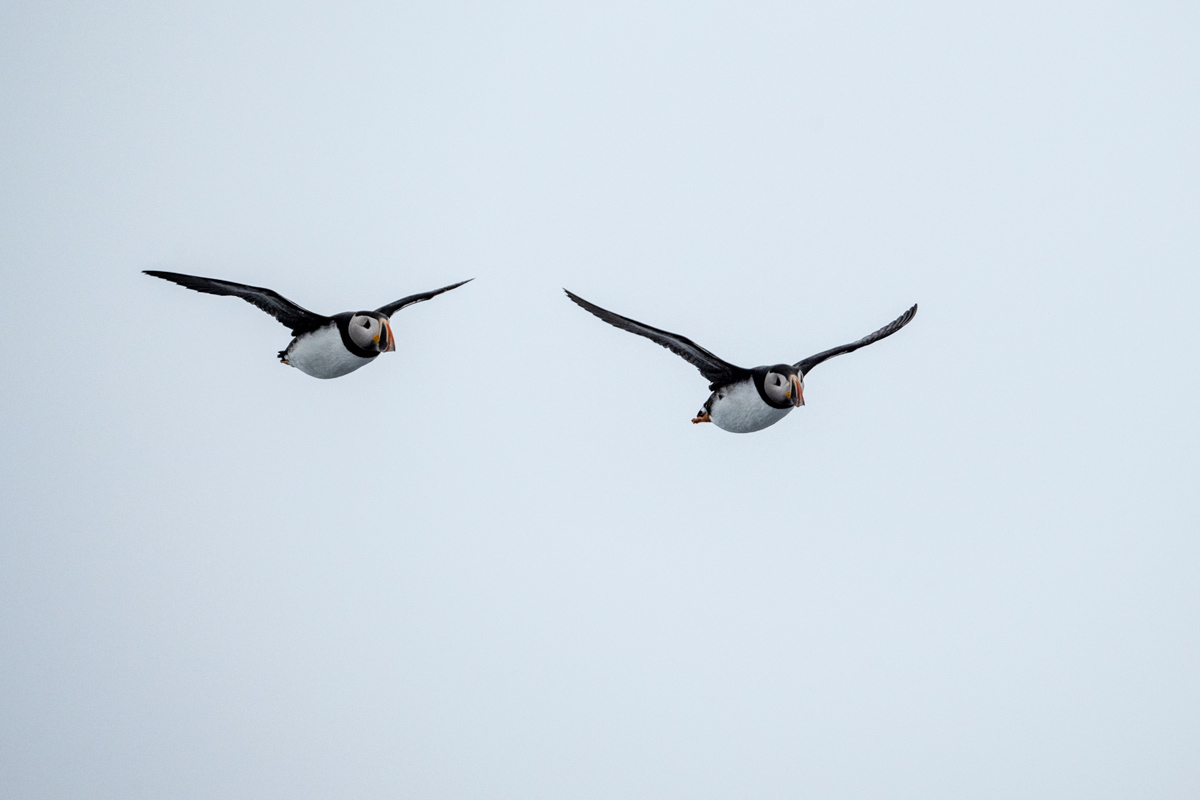

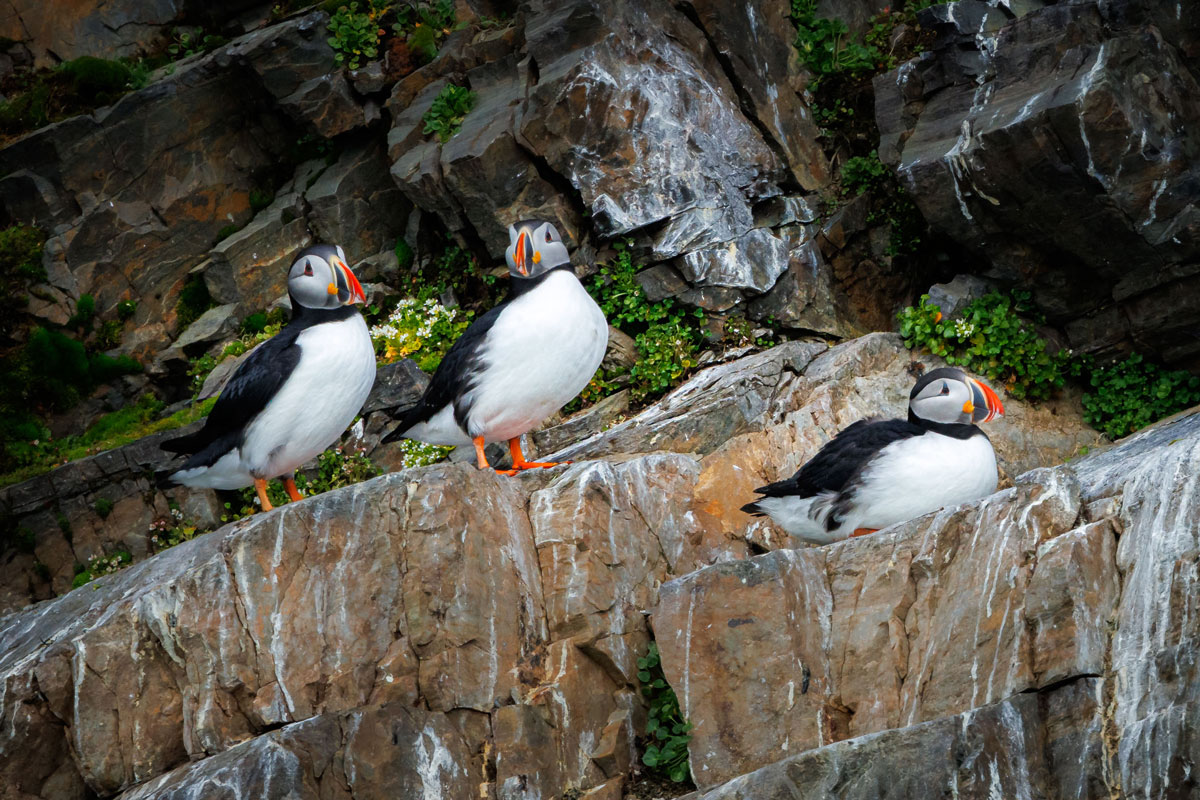
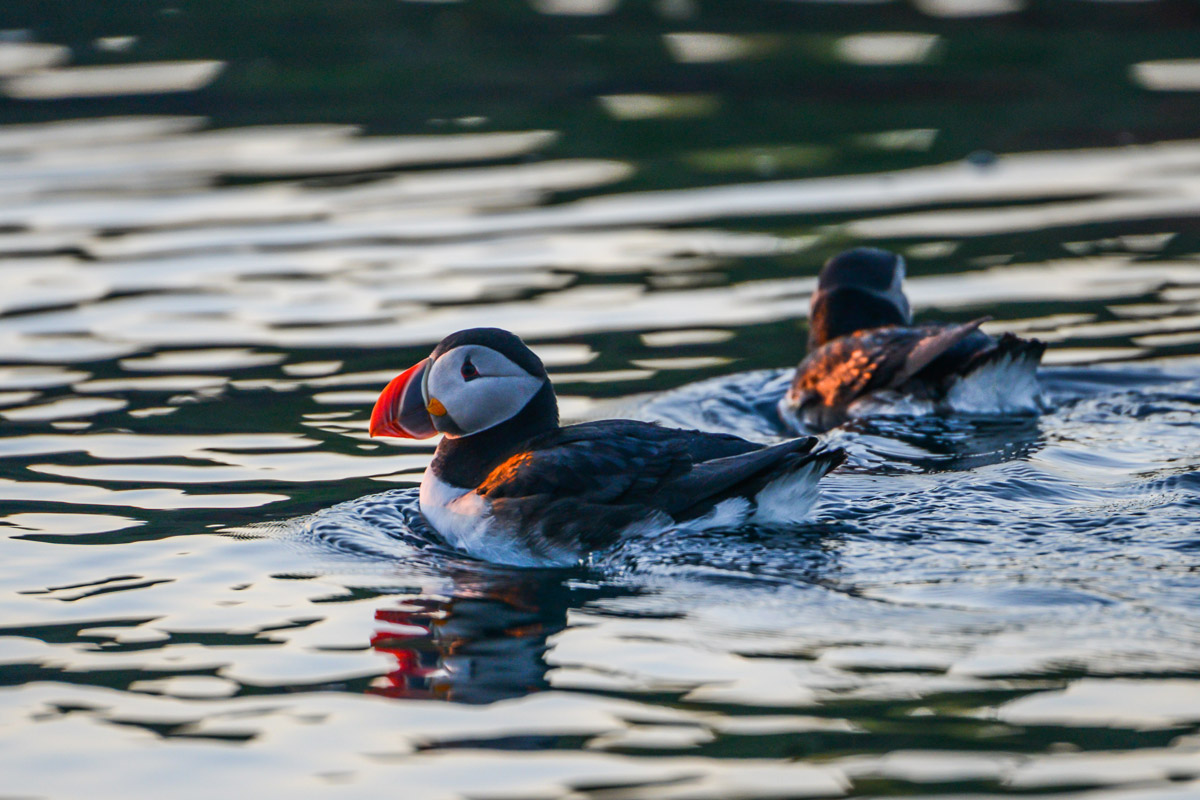
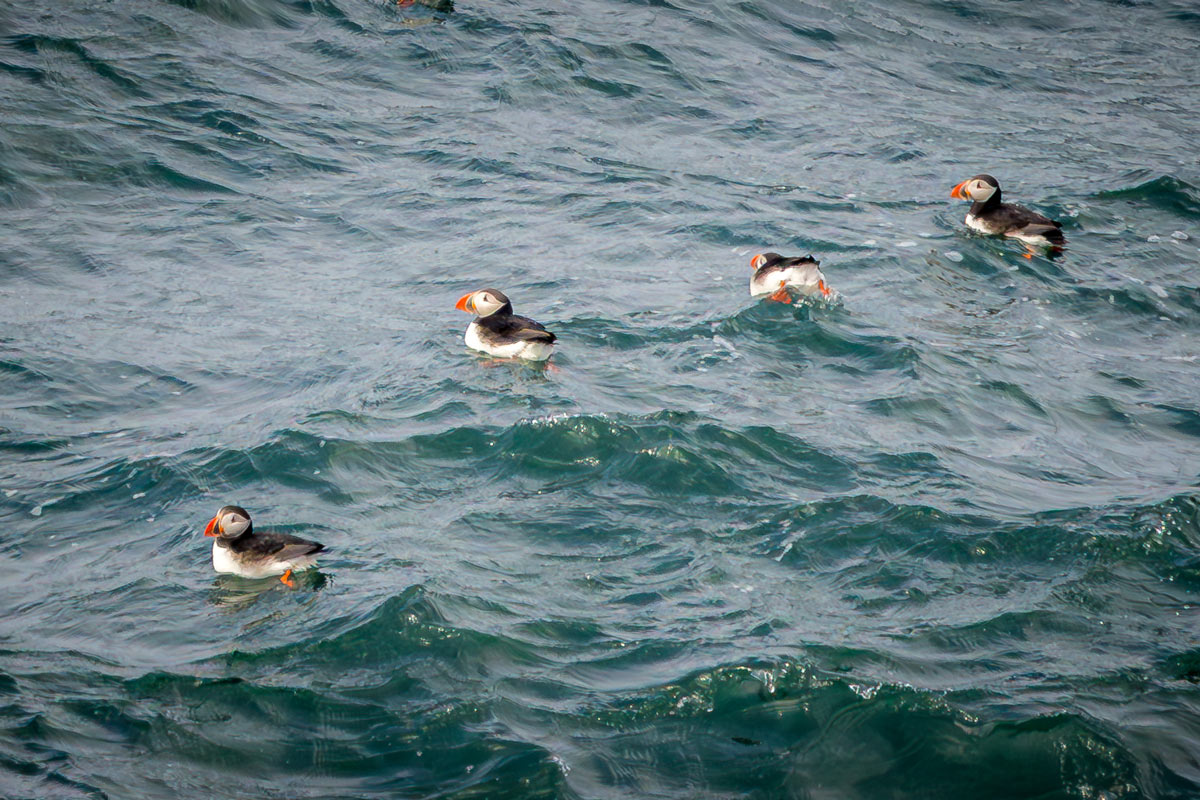
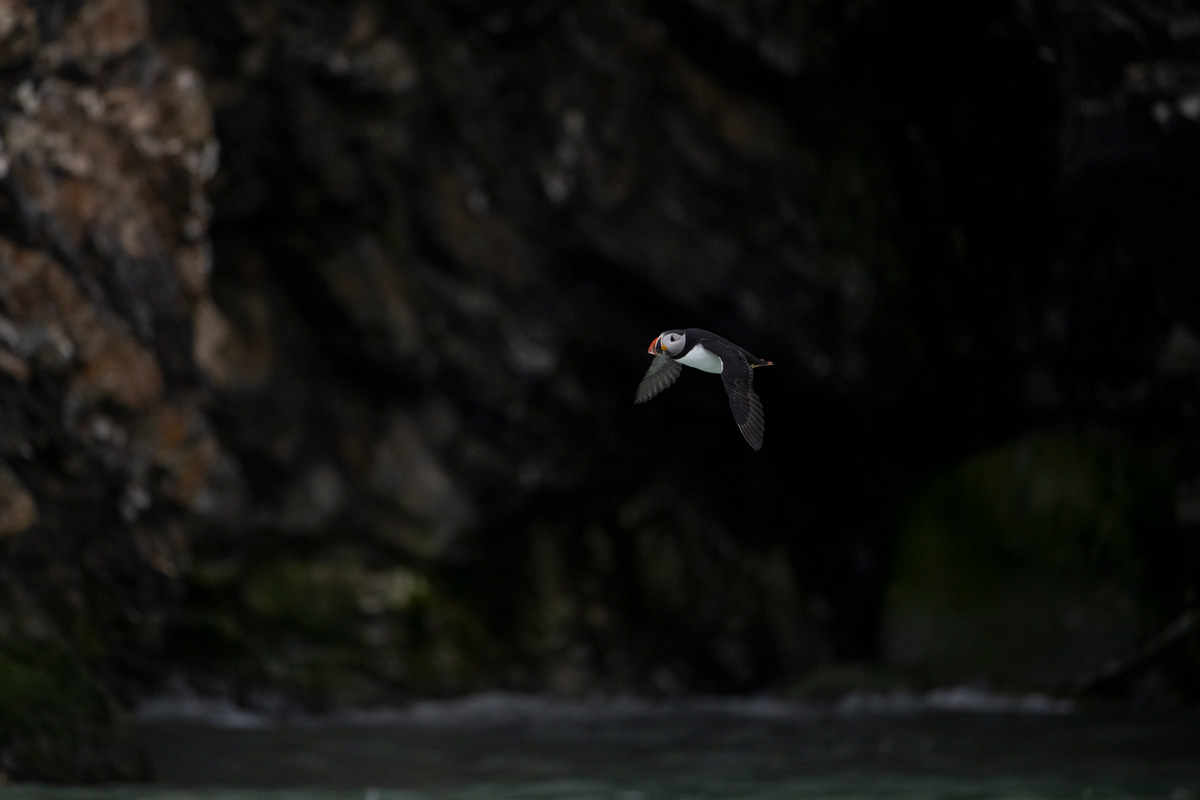
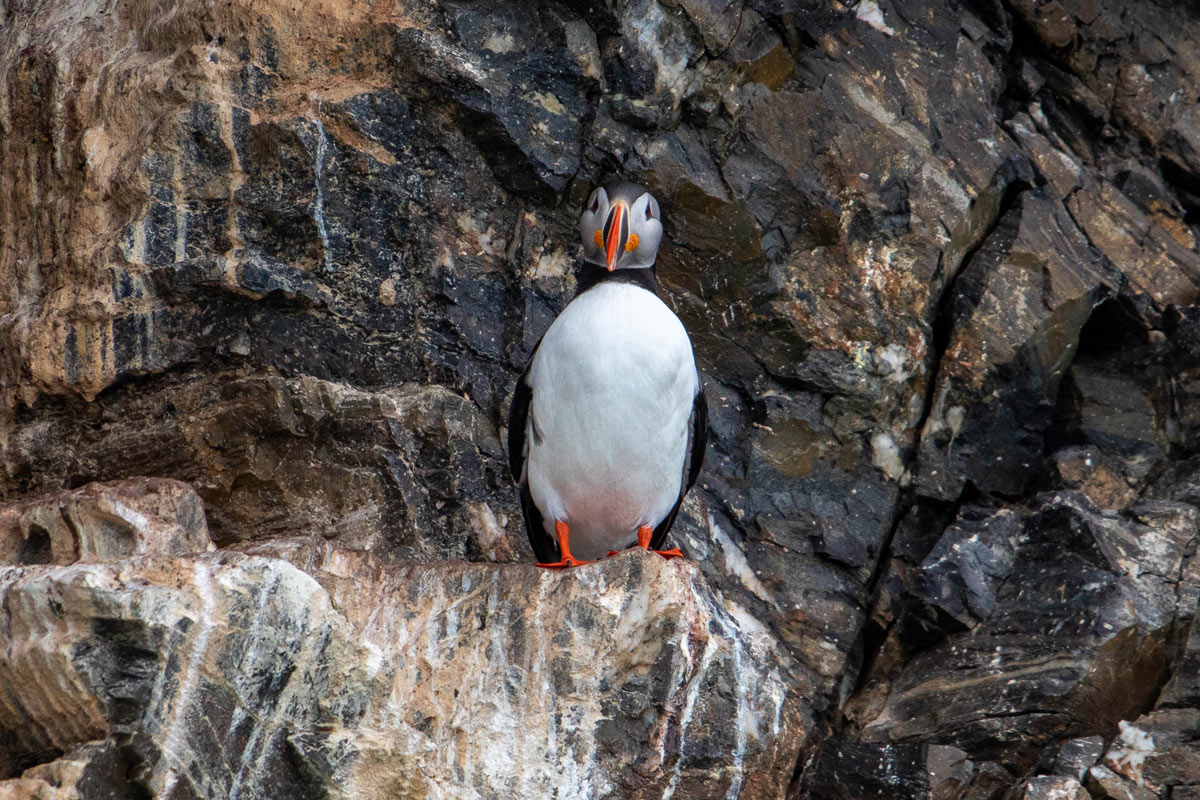
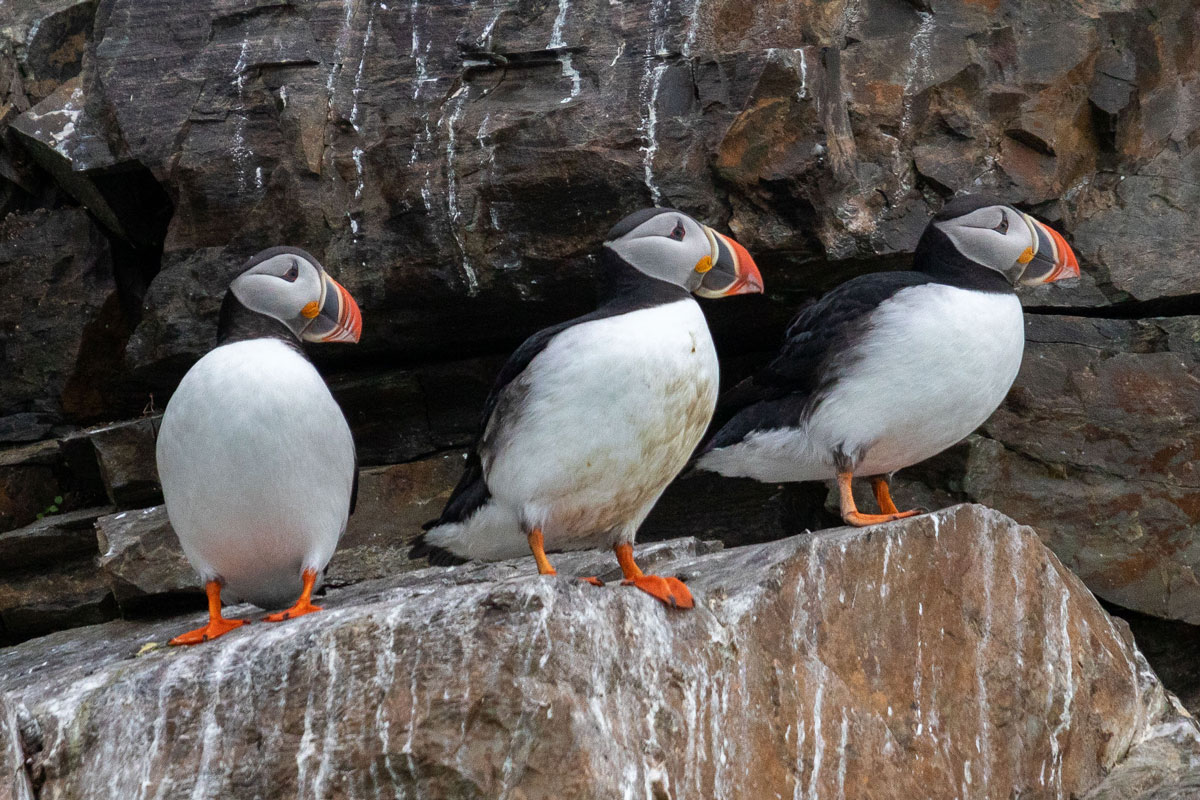
Want to see the Atlantic Puffin for yourself?
Reach out to our team to learn more about our voyages any time!
